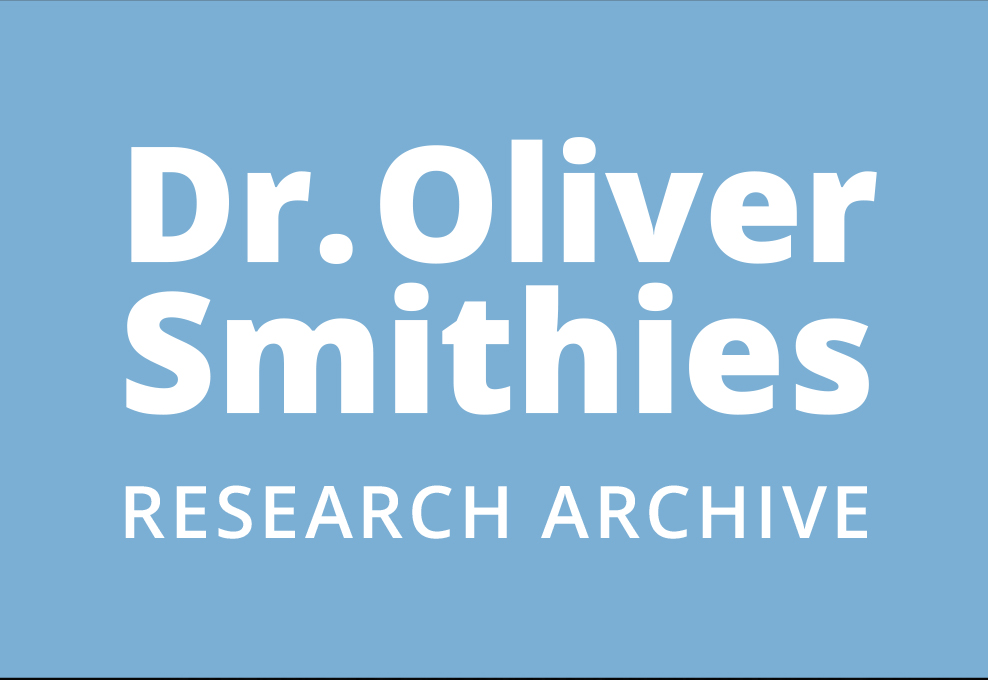A Life at the Bench
by Mark Derewicz
This article was originally published in Endeavors in 2008.
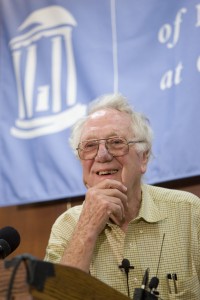
Early in the morning on October 8, Oliver Smithies got the call. Carolina’s first Nobel Prize winner had spent half a century doing the science he loves.
In 1936, when Oliver Smithies was eleven years old, his uncle lent him a telescope with a broken lens. Oliver wanted to fix it, so he read stacks of Scientific American magazines at the local library.
“I remember getting quite a long way with making an eight-inch lens,” Smithies says. “But at one stage I had to heat it up and unfortunately I didn’t understand something properly and it cracked.”
Days of work down the drain. But Smithies shook it off and tried to make a smaller lens with the remnants of the first. He sprinkled grinding powder on a thick slab of mirrored glass and used a metal soup can attached to a drill press to cut the glass down to size. He wasn’t sure the edge of the soup can was sharp enough to cut the mirror, but he tried anyway. For hours, Smithies withstood the piercing screech of metal boring into glass, turning that drill handle and watching the soup can rotate slowly until it finally cut through.
“And I did make that lens,” he says. “But I could never get that telescope to work.” Smithies, though, realized that he loved the process more than anything. He loved making things. And he did eventually make a telescope, along with a bunch of other cool stuff.
As an adult, he was still tinkering and inventing. By age sixty, in 1985, Smithies had garnered several awards for various discoveries and inventions, and was still working at his lab bench every day. But at that time, Smithies was in the throes of a complex series of experiments, well beyond telescopes and pulverized glass and so tediously long that graduate students left to pursue other goals. Many scientists doubted his hypothesis. Could Smithies actually insert a segment of DNA into the gene of a mammalian cell, and prove that the DNA segment took up residency at the proper location in the cell’s genetic material? Smithies thought he would have quite an invention on his hands — a way to target specific genes so that, potentially, mutated genes could be replaced or repaired.
The method took years. It was cumbersome and unwieldy, but he got it to work. He successfully targeted a specific gene. Around the same time and independently of Smithies, geneticist Mario Capecchi also figured out gene targeting. And in England, Martin Evans had successfully isolated the embryonic stem cells in a mouse, altered the genes of those cells, and reintroduced the cells into a foster mouse to create genetically modified offspring.
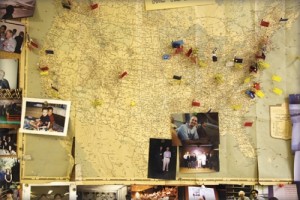
Biomedical research has never been the same. Using the discoveries of these three scientists, researchers around the world, including Smithies, created hundreds of mouse strains that genetically model human diseases. They also made thousands of mouse models that have altered genetic material so scientists can figure out what specific genes are responsible for doing.
“There is no doubt that this work will lead to new therapies in virtually every disease that has a genetic basis,” says Etta Pisano, vice dean of UNC’s School of Medicine and professor of radiology and biomedical engineering.
Mouse models have opened up countless avenues of research, created a vast amount of scientific knowledge, and led to the creation of drugs for cancer and other diseases. For this, Smithies, Capecchi, and Evans won the 2007 Nobel Prize for Physiology or Medicine.
Smithies, 82, says the award capped a long career. “But,” he adds, “I don’t think I’m finished yet.”
From comic books to Oxford
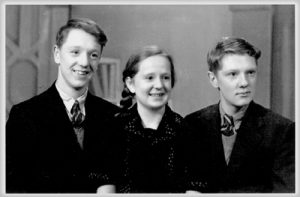
Oliver Smithies, left, as a teenager in England with his younger sister Nancy and fraternal twin brother Roger.
The son of an English teacher and an insurance salesman, Smithies grew up in Copley, a small industrial village two hundred miles north of London. It was a happy childhood spent with his fraternal twin brother and younger sister. But in 1932 Smithies contracted rheumatic fever, which can cause damage to the heart. He was bedridden for ten weeks and wasn’t allowed to play sports until he was fourteen.
“It was sad not being able to play games outside as a boy, but I enjoyed reading,” he recalls. “And I’m naturally optimistic, so having rheumatic fever didn’t make me unhappy or anything. It was a fact of life.”
While Smithies was reading, a character in a comic book — an inventor — caught his eye. Already fond of tinkering in his father’s garage, Smithies announced to his family that he would become an inventor. As luck or fate would have it, his best friend’s dad managed a clock-making company.
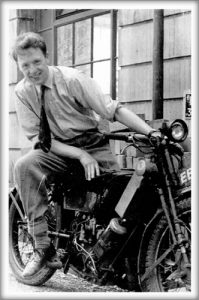
Oliver Smithies in his early twenties, sitting on a motorcycle that he continually tinkered with. At the time of this photo, he was a university student at Oxford.
“He had a lathe, a drill press, things like that,” Smithies says. “At first we got motorcycles to run and made radio-controlled boats. Oh, we had a grand time.”
Smithies made radios and telescopes, and tried to make a remote speaker system out of a pig’s bladder, learning the scientist’s credo early in life: “If you need something that’s not available, you make it.” In his lab is equipment he made twenty years ago. He nods toward a polymerase chain reaction machine, which isolates different parts of the DNA sequence from genetic material. “When it was invented, you couldn’t buy one right away, so I made one,” he says.
In 1943 Smithies earned a scholarship to Oxford instead of getting drafted into the army. “I never really understood what happened there,” he says, “but they had some sort of board that directed students what to do. I was directed to go on with my studies; I haven’t the faintest idea why. They must have decided that some people would make a greater contribution to the war effort by doing research or whatever, instead of, unfortunately, the horrible jobs that soldiers had to do.”
At Oxford Smithies considered becoming a physicist, but then thought he’d be able to help more people in a direct way if he studied medicine. After two years of medical school he was given a choice between clinical work and extra schooling for an honors degree. He chose the latter and studied animal physiology.
“And that’s when I realized I wanted to do research,” he says. “It’s not that I didn’t think medicine was interesting; I just couldn’t not do research, as it were.”
During that honors year, his favorite teacher was Sandy Ogston, a molecular biologist at a time when molecular biology didn’t exist as a formal topic. Under Ogston’s tutelage, Smithies figured out a way to detect interactions between proteins by measuring osmotic pressures. The experiments took more than two years, and although they were ultimately successful, nobody ever used his method. He would later say that his discovery was useless, but he considered the work good training. And he felt satisfied.
Smithies earned his doctorate, and then Ogston advised him to work abroad, maybe in the United States.
“I wasn’t very keen on that idea,” Smithies remembers. “I didn’t particularly like America, but I didn’t know anything about the country.” Ogston told Smithies, “All the more reason you should go.”
Remembering the Jelly
Smithies did his post-doctoral work at the University of Wisconsin before heading to Connaught Medical Research Laboratory in Toronto, where he worked from 1952 to 1960. Scientists there had two main duties: make compounds not readily available in Canada and do research. Smithies worked with insulin; he suspected that there was a precursor to the hormone. To find out, he had to separate proteins in blood, and for that he chose a method called electrophoresis.
The experiment went like this: you put a spot of protein mixture in one place on a wet piece of filter paper and then pass an electric current through the paper. Proteins that were negatively charged would move toward the positive end of the paper. Vice-versa for positively charged proteins. This way, the proteins would separate.
“But I noticed that insulin stuck to the paper,” Smithies says. “It didn’t really move; it just unrolled like a carpet, and then it stopped.” He couldn’t figure out anything about insulin this way.
Smithies turned to starch electrophoresis, a similar sort of experiment. “It was like having a tray full of wet sand,” he says. “You might call it a wet starch pie, a sand pie. When you’d pass an electric current through the starch, the proteins would migrate through the starch grains; they wouldn’t stick. But the only way of finding the proteins was to cut that starch pie into slices and do a protein determination for each slice.”
That meant doing fifty protein determinations for one experiment.
“I couldn’t afford to do that experiment,” Smithies says. “But I knew starch would work. I was thinking about this one day when I remembered my childhood. I used to help my mother do the laundry; she’d starch my father’s shirts, and in those days you cooked the starch. When finished, the starch turned into a jelly. So I thought, okay, all I had to do was cook the starch, make a jelly instead of a loose slurry, and then I could stain the proteins with dye because I knew that the dye wouldn’t stick to the starch. I could avoid this business of cutting that pie.”
It worked. The proteins separated, the dye stained them, and Smithies studied them.
Before this, scientists thought that a molecule of blood contained five different proteins. Smithies found twenty-five, and also determined that all of us have very different mixtures of proteins in our blood. Scientists everywhere began looking for genetic differences in blood and finding them, opening up a whole new realm of biological understanding and leading to the use of blood proteins in forensic science. Scientists eventually found several hundred different proteins in blood.
His invention, gel electrophoresis, turned out to be a much more powerful method for separating proteins than typical starch electrophoresis. Gel electrophoresis is the father of acrylamide gel electrophoresis, which labs everywhere still use today.
For this work, Smithies won the Gairdner Foundation International Award, considered a precursor for the Nobel. More importantly, his experiments piqued his interest in genetic differences. Around the same time, Francis Crick and James Watson discovered the structure of DNA. Smithies became a geneticist.
The Eureka Moment
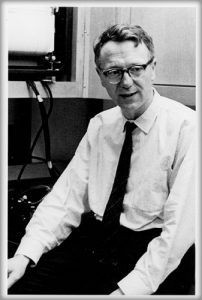
Smithies at the University of Wisconsin, where he delved into genetics research from 1960 to 1987 before coming to Carolina. It was at Wisconsin that he developed the initial method for gene targeting that led to mice that model hundreds of human diseases.
In 1960 Smithies returned to the University of Wisconsin, where he discovered that some people have duplicates of parts of certain genes: they have two copies of a given gene instead of just one. He also found that these partially duplicated genes can match up on the chromosome in two different ways, in some cases leading to the creation of a gene that is three times the normal length.
As genetic science advanced through the 1970s, Smithies began studying individual hemoglobin genes. Up until that point, scientists worked with hemoglobin proteins. Vernon Ingram, for instance, discovered the particular amino acid that causes sickle cell anemia. Then scientists discovered the lone gene implicated in the disease.
Meanwhile, Smithies was one of the first scientists to physically separate a gene from the rest of the DNA of the human genome, a process referred to as isolating a gene. His lab then isolated the normal DNA that corresponds to the hemoglobin gene that is mutated in sickle cell patients.
“So I thought surely it should be possible to use the normal DNA to correct the abnormal DNA,” Smithies says. He thought this could lead to cures for diseases in which one gene is implicated.
Then in 1982 Smithies read a paper about a complex method for finding one piece of DNA among hundreds of thousands of pieces. He wondered if he could use a similar procedure to find out if a foreign piece of DNA that he inserted into a cell could find the corresponding spot in that cell’s genome, and then replace that gene. If this could work — this gene targeting — then theoretically scientists could correct faulty genes.
“So I thought about that paper and taught about it — I was teaching a graduate class at the time — and then ten days later I realized how to do the experiment,” he says.
It took three years, but toward the end he found some evidence that DNA injected into cell culture did find the right spot in the cells’ DNA through a process called homologous recombination. But he still needed definite proof of success or failure. Smithies was trying to show that beta-globin genes and hemoglobin genes with eleven thousand base pairs were altered. If so, they’d have only seven thousand bases.
“We had about thirty bottles of cells lined up and we thought that one of them ought to have worked,” Smithies says. “We should be able to find a piece of DNA that was seven thousand bases long. So we isolated the DNA from each of these thirty bottles, used an enzyme that cuts the DNA, and put it into a gel electrophoresis so that the bands of DNA would separate according to their sizes. And we looked to see if there was a band that was seven thousand bases long. One collection of cells had been altered. We knew it had worked.”
Smithies says that his eureka moment felt like coming out of the clouds while flying a plane, a hobby he picked up in the 1970s.
“Instruments indirectly tell you where the runway is so that when you come out of the clouds the runway should be right in front of you,” he says. “If not, there are procedures you can do to try again without crashing.”
Smithies had landed, but the ride was a little rocky. His method was complicated.
“It took three years and it did work,” he says. “But it was a poor method in the end; the success rate was extremely low. It’s not a method anybody would ever dream of using anymore. I don’t use it. But it showed the principle.”
Until then, gene targeting had only been achieved in yeast. Many researchers were skeptical of targeting human genes because human genes and cells are much more complex than yeast. Smithies forged ahead along with a few other optimists, including Mario Capecchi, who Smithies says devised a more efficient method for gene targeting that allowed scientists to see what certain genes are responsible for.
“Mario realized that it was important to knock out a gene in a mouse to see what that gene does,” Smithies says, “whereas I was interested in correcting a mistake — a mutated gene.”
Then Smithies attended a conference in Scotland where Martin Evans showed how he had removed embryonic stem cells from a mouse, altered the genes, and inserted the stem cells into a different mouse. That mouse’s offspring had the same genetic alteration, and the implications were enormous. Smithies wanted those embryonic stem cells. He spoke with Evans, who later delivered some to Smithies in a vial in his shirt pocket.
Smithies and Capecchi, still working independently but now in closer contact, grew the stem cells in their labs, studied how they evolve, and later created mouse models that show precisely how genes function and how gene mutations can cause human diseases. They won the Gairdner Award for their work in gene targeting; it was the second time Smithies won. In 2001, Smithies, Capecchi, and Evans won the Lasker Award, considered the American version of the Nobel Prize. Nearly 50 percent of Lasker winners go on to win the Nobel, and Carolina was abuzz with the possibility that Smithies would soon fall in that category.
“Gene targeting was a revolution twenty-five years ago, and now it’s absolutely fundamental,” says UNC geneticist Fernando Pardo-Manuel de Villena, who is researching gene diversity in lab mice. “I remember when I started graduate work, people were talking about Oliver’s discovery, and we all thought it was too good to be true. It was truly remarkable. And it’s remarkable to me that it took so long for him to win the Nobel Prize. To me, it should have happened at least ten years ago. Without Oliver, biomedical research would not be where it is today.”
Gene Targeting 101
Smithies says that the science behind gene targeting is difficult to explain. So he likes to use a pair of analogies.
Imagine a book with one thousand pages, each page containing one thousand words. Now imagine three thousand of these books. All those words represent all the genetic information in a human body. Gene targeting allows scientists to pinpoint one word on page ninety-one in volume 1,349. The procedure allows scientists to knock out that word or replace it.
“So now imagine a car,” Smithies says, putting us in the seat beside him. He points up to the dome light and says, “If you knock out that light bulb, nothing really changes other than the fact that you can’t read a newspaper at night. But knock out that wheel or the drive shaft. That’s pretty bad.”
That’s how genes work. Some don’t do much, if anything. Others are responsible for quite a lot. Sometimes, if just one gene is mutated, you can get a disease such as cystic fibrosis, sickle-cell anemia, or Lesch-Nyhan Syndrome, a rare disease that causes sufferers to severely mutilate themselves. In Smithies’ lab, geneticist Nobuyo Maeda managed to correct that Lesch-Nyhan gene in cell culture. Two years later at UNC, Smithies and geneticist Beverly Koller created the first mouse model of Lesch-Nyhan Syndrome. And in 1992, Smithies and Koller made the first mouse model of cystic fibrosis.
Meanwhile, hundreds of other scientists began using this new gene-targeting tool.
Jeremy Berg, director of the National Institute of General Medical Sciences (NIGMS), says, “Gene targeting has had such an incredible impact on the study of human diseases that it’s hard to imagine biomedical research without it.”
Before gene targeting, Berg says that it was difficult to prove which mutated genes caused certain diseases. But then along came the knockout mouse.
“For instance, there’s a gene associated with atherosclerosis,” Berg says. “The inheritance link in this disease was somewhat surprising, but the knockout mouse model was made, and sure enough, it confirmed the link. The animal model for the human disease could then be studied in detail.”
NIGMS has granted nearly twenty million dollars to Capecchi and Smithies since 1968 and 1973, respectively. And their work, Berg says, has dramatically increased our knowledge of biology, genetics, and human diseases. It’s inspired new lines of basic research and has led to the creation of drugs, such as the cancer drug Imatinib. Tens of thousands of jobs — many of them in North Carolina — have been created as part of the multi-billion-dollar biotech industry that’s built on basic research such as the original work of Smithies and Capecchi.
Not the End
In 1987 Smithies finished his twenty-seventh year at the University of Wisconsin. He was sixty-two, and he and Nobuyo Maeda fell in love. The next year, Wisconsin failed to offer a job to Maeda. UNC hired her and Smithies followed her to Chapel Hill; a $900,000 grant from the North Carolina Biotechnology Center helped bring them both here, along with five other promising scientists.
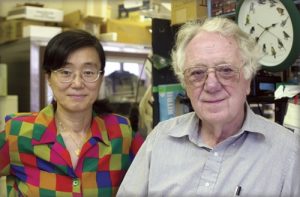
In 1988 Nobuyo Maeda and Oliver Smithies left Wisconsin and settled into their lab in UNC’s Brinkhous-Bullitt building, where Maeda created the first mouse models of atherosclerosis and Smithies tackled the complex genetic causes of high blood pressure. They also married.
Smithies and Maeda were soon married, and moved into a house not far from campus. They also moved their labs into the seventh floor of UNC’s Brinkhous-Bullitt building, where they still work today.
Inspired by his wife’s research on the genetic causes of atherosclerosis (she created the first mouse model of the complex disease), Smithies began studying the equally complex genetics of hypertension.
By the year 2000, forty-some graduate students had worked in the Smithies-Maeda lab. Josh Knowles was one of them.
“Oliver is obviously brilliant, but I also can’t imagine another scientist with such generosity of spirit,” Knowles says. “Oliver and Nobuyo don’t just want you to crank out data; they want genuine relationships. He spent hours helping me improve some of my manuscripts. And he didn’t just criticize; he taught me how to be a better writer.”
Knowles, now a research fellow at Stanford, was in Chapel Hill for a wedding last October when the announcement came that Smithies had won the Nobel Prize.
“My first thought was that I won’t get to visit with him because he’ll be too busy,” Knowles says. “My second thought was that it’s about time.”
Knowles remembers Smithies saying that young scientists should try to find something they love so much that they’d sacrifice a weekend for it. Smithies still follows this advice, often working seven days a week. And still, at 82, he conducts experiments himself, an uncommon thing for an accomplished scientist of any age.
Smithies is also fond of saying that scientists should have three things in life: their work, a hobby, and a family. His family is Nobuyo. His hobby is flying. And his work continues. He is currently researching how kidneys separate large and small molecules.
“I suspect it has to do with a gel,” he says. “And I like gels, you see.”
One sunny Sunday last October, Smithies spent several hours in his lab — not at the bench, but at the desk. He was working on a grant proposal. “I was doing something most scientists will recognize,” he says. “I was writing a reply to a committee that turned down my request for funding.” Later that day, he and Maeda enjoyed lunch together. And then he took his plane for spin above Chapel Hill. It was a really good day, he says. At five o’clock the next morning, his phone rang. It was the Nobel Foundation. A peaceful feeling came over him.
“I hope that this isn’t the end of my time here,” Smithies says. “I hope to enjoy this a while yet. But if I die somewhere — which I’m sure will happen — it might as well be at the bench, because that’s where I’m happiest.”
This article was written by Mark Derewicz and originally published in Endeavors on January 1, 2008.
